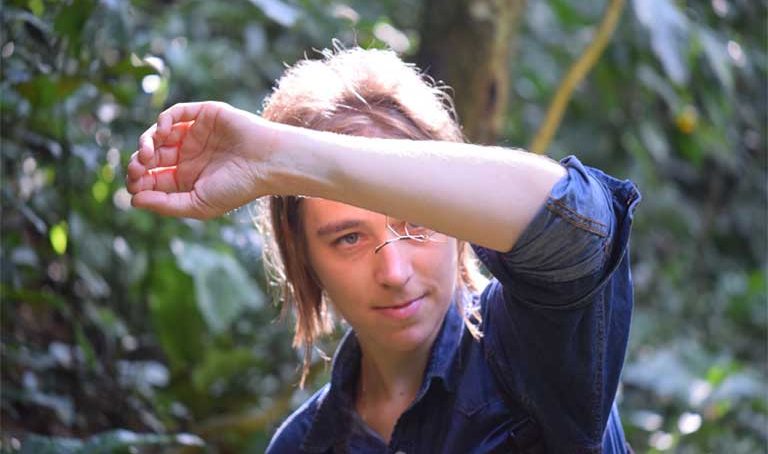
Netherlands-based herpetologist Jordi Janssen says that rediscovered species are highly prized, which is why traffickers always on the lookout for new research reports where they can extract information and useful to leads to newly profiled reptiles.
“Last year there was a paper on a lizard from Sumatra, which had not been seen for 170 years. They published a location (of a new find). On social media, I then saw a post by a convicted reptile smuggler that he went to Sumatra multiple times to find this animal. I am sure this species will be in trade as soon as [Covid-19] travel restrictions are gone.”
“Once a species is in trade, it is very, very difficult to do anything about it,” says Janssen, programme officer at the Monitor Conservation Society. “[Traffickers] set up a legal stream, laundering everything [wild-caught] by claiming captive breeding.”
He explains why: “I keep a gecko for a year and it lays what, two, three eggs? Geckos are easy to catch. You see 10 geckos on a rock, nine are yours, just get a headlamp and grab, grab, grab. In one evening, I can get more than I can breed in a year.”
The Oaxacan spiny-tailed iguana (Ctenosaura oaxacana), a species endemic to Mexico and first described in 2001 on sale at Terraristika for 250 euros. This species is listed as critically endangered by the IUCN. Image courtesy of Handout.
Taxonomist Yang Jianhuan’s decision not to publish the exact location of his latest cave gecko species discovery was controversial. While some of his colleagues supported the researcher, Senior Conservation Officer at Kadoorie Farm and Botanic Gardens in Hong Kong, there were also opposing voices who said that Yang broke one of the most important premises of science: transparency, and went against the taxonomic tradition of publishing location data.
“The colleagues of the older generation said I must publish. They say the tradition cannot be broken. I really understand both sides, but some scientists just have not yet realised that this problem is now very big,” Yang says.
He suggests a compromise: “For reptiles with high commercial value – turtles, cave geckos, pythons – only researchers and government agencies should be authorized to access the exact location data.”
The Hamm, Germany reptile fair, known as Terraristika, touts itself as being the largest reptile trade show in the world. Collectors often see themselves as conservationists, not as depleting biodiversity Image by anonymous.
The moment that a location is revealed, a newly discovered species is exposed and virtually defenceless, say experts. The wheels of the Cites bureaucracy turn slowly and by the time the species is listed (if it ever becomes listed) and awarded protection by the Convention on International Trade in Endangered Species (Cites) of Wild Fauna and Flora, the “Germans with suitcases” will have already put it into commercial circulation, laundering the newly caught animals utilizing captive breeding claims as legal cover.
Why is the trade so lucrative? Collectors crave rarity. “Range-restricted, rare species are disproportionally overrepresented in reptile trade,” explains Hughes. This makes newly described species especially vulnerable: “Many have really tiny ranges, such as a single limestone hill. Their entire populations can be quickly collected out for trade.”
Yang warns against the dangers to biodiversity of piecemeal harvesting of newly described species: “We don’t know their role in the ecosystem, where they live [range size], what their prey is and what eats them. We don’t know how important they are. Their removal may not have an immediate effect, but long-term effects? We don’t know.”
Entrance to a karst cave in southwest China. Even accessible, often frequented, caves can still harbour new species, including reptiles. Image by Pavel Toropov.
Sandra Altherr, co-founder of Pro Wildlife, a conservation NGO in Germany, lambasts reptile traders for their “self-serving mentality, taking from nature anything that fits into your reptile tank,” but Janssen notes that many collectors and traders see themselves as conservationists who preserve species by setting up captive populations.
So far, the traffic has been one way, with species disappearing from the wild into collectors’ tanks. Alice Hughes, a research professor at Xishuangbanna Tropical Botanical Garden, the Chinese Academy of Sciences, says that populations of 21 reptile species are thought to have been completely collected out. No trader has come forward to reintroduce into the wild any of the species they collected for profit.
So motivated are traffickers, say conservationists, that not even a rare tree snake living in a tropical forest canopy is safe.
When Matilda’s horned viper (Atheris matildae), an arboreal snake from southern Tanzania, was described in 2011, it made the news and its images were published in mainstream media. The location was deliberately concealed to protect it from collectors.
Despite the secrecy, the critically endangered viper was tracked down within months and put on sale in Europe by German traders. The price was anything above €500 ($606) per piece.
- A Nature magazine report











